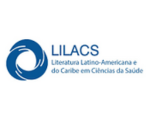Descriptive study of the quality of lymphadenectomy in colorectal cancer in the Departament of Salto Uruguay
Keywords:
Colorectal cancder, oncologic lymphadenectomyAbstract
Introduction: colorectal cancer is a pathology of high incidence in our country, of high morbidity and health costs. The objective of this study is to know the percentage of satisfactory lymphadenectomies as well as the main epidemiological characteristics of colorectal cancer patients in the department of Salto, Uruguay.
Material and methods: a descriptive and retrospective study whose data were obtained from the computer database of the health centers of the city of Salto, from June 2011 to June 2017. It is considered as satisfactory lymphadenectomy the obtaining by the pathologist of a number Equal to or greater than 12 lymph nodes.
Results: A total of 221 patients were diagnosed with colorectal cancer, 26% of urgency and 74% of coordination. 47% were men and 53% were women. Postoperative staging showed that 2% were T1, 12% T2, 21% T3 and 58% T4. Metastatic ganglia were found in 24% of the cases, and in 61% of the cases the resected nodes were equal Or greater than 12.
Conclusions: we have been able to know the percentage of oncologically satisfactory lymphadenectomies as well as the main epidemiological characteristics of patients with
colorectal cancer. This is of great importance as a starting point for improving results, as well as for new research
Downloads
Metrics
References
2. Musé I, Sabini G, Ottati a, Piazza N. Morbilidad por cáncer. Aspectos epidemiológicos en el Casmu. Rev Med Uruguay 1987;3(2):121-34.
3. Gutiérrez Galiana H. Prevención del cáncer colorrectal. Tendencias en Medicina 2010: 119-24
4. Barrios E; Garau M; Alonso R; Musetti C. IV atlas de incidencia del cáncer en el Uruguay: periodo 2007-2011. [Internet]. Montevideo: Comisión Honoraria de lucha contra el Cáncer - Registro nacional de cáncer.[Citado 16 jun. 2017]. Disponible en: www.comisioncancer.org.uy/andocasociado.aspx?394,1175
5. Instituto Nacional de Estadística. Censos 2011 [Internet]. Montevideo, Uruguay: INE;2011 [Citado 15 jul.2017]. Disponible en: http://www.ine.gub.uy/web/guest/censos-2011
Cir. Urug. 2017. Vol. 1, No. 1 (Tercera época) 3-10
6- Conférence de consensus. Prévention, dépistage et prise en charge des cancers du côlon. GastroentérolClin Biol 1998;22 :205-18
7- Hermanek P, Henson D, Hutter R, Sobin L. (Eds.) TNM Supplement 1993. Berlin: Springer-Verlag; 1993.
8- Center MM, Jemal A, Smith R, Ward E. Worldwide variations in colorectal cancer. CA Cancer J Clin2009; 59(6):366-78.
9- Ferlay J, Parkin DM, Steliarova-Foucher E. Estimates of cancer incidence and mortality in Europe in2008. Eur J Cancer 2010;46(4):765-781.
10- Béjar L, Gili M, Díaz V, Ramírez G, López J, Cabanillas J, et al. Incidence and mortality by colorectal cancer in Spain during1951-2006 and its relationship with behavioural factors. Eur J Cancer Prev. 2009;18(6):436-44.
11- Gili M, Cabanillas JL, Béjar L. Mortalidad evitable y cáncer de colon y recto. Gac Sanit. 12-Bouvier AM, Launoy G. Epidemiology of colorectal cancer. Rev Prat. 2015;65(6):767-73
13-Chauvenet M, Cottet V, Lepage c, Jooste V, FaivreJ, Bouvier AM. Trends in colorectal cancer incidence: a period and birth-cohort analysis in a well-defined french population. BMC Cancer. 2011;11:282.
14- Shin A, Joo J, Bak J, Yang HR, Kim J, Park S, et al. Site-specific risk factors for colorectal cancer in a korean population. Plos One 2011;6:e23196.
15- Magalhães B, Peleteiro B, Lunet N. Dietary patterns and colorectal cancer: systematic review and metaanalysis. Eur J Cancer Prev 2012;21:15-23.
16- Inra J, Syngal S. Colorectal cancer in young adults. Dig Dis Sci 2015;60(3):722-33.
17 - Hubbard J, Grothey A. Adolescent and young adult colorectal cancer. J Natl Compr Canc Netw 2013;11(10):1219-25.
18- Engstrom PF, Benson AB 3rd, Saltz L; National Comprehensive Cancer Network. Rectal cancer. Clinical Practice Guidelines in Oncology. J Natl Compr Canc Netw. 2003;1(1):54-63.
19- Aleksandrova K, Jenab M, Boeing H, Jansen E, Bueno-de-Mesquita HB, Rinaldi S, et al. Circulating creactive proteinconcentrations and risks of colon and rectal cancer: a nested case-control study within the european prospective investigation into cancer and nutrition. Am J Epidemiol 2010;172(4):407-18.
20- Cantinelo P, Lapiedra D, Duffau A, Vilas A, Misa R. Linfadenectomia en el adenocarcinoma de colon. ¿Dónde estamos hoy? 60° Congreso Uruguayo de Cirugia; nov. 2009; Punta del Este, Uruguay
21- Trufelli DC, Miranda Vda C, Palos CC, Ramos E, Abrão MN, Silva VA, et al. Positive/total dissected lymph nodes ratio as a prognostic factor in colon cancer. Rev Assoc Med Bras.2007;53(6):539-42.
22- Chen SL , Bilchik AJ.. More extensive nodal dissection improves survival for stages I to III of colon cancer; a population-based study. Ann Surg 2006;244(4):602–10.
23- Soria Aledo V, García Granero Ximénez E (coord..). Vía clínica de la cirugía programada por carcinoma colorrectal. [Internet]. España: Asociación Española de Cirujanos; 2011. [Citado 25 jun 2017]. Disponible en: http://www.aecirujanos.es/images/stories/recursos/secciones/gestion_calidad/2015/via_clinica%20cirugia_carcinoma_colorrectal.pdf
24- Le Voyer TE, Sigurdson ER, Hanlon AL, Mayer RJ, Macdonald JS, Catalano PJ, et al. Colon cancer survival is associated with increasing number of lymph nodes analyzed: a secondary survey of intergroup trial int-0089. J Clin Oncol 2003;21(15):2912-9.
25- Plazzotta C. Cáncer colorrectal: casuística del Hospital Maciel. Cir Urug. 2003;73(1):48-50
26- Tekkis PP, Kinsman R, Thompson MR, Stamatakis JD; Association of Coloproctology of Great Britain, Ireland. The Association of Coloproctology of Great Britain and Ireland Study of Large Bowel Obstruction Caused by Colorectal Cancer. Ann Surg. 2004;(240)1:76-81.
27- Morris EJ, Maughan NJ, Forman D, Quirke P. Identifying stage III colorectal cancer patiens: the influence of the patient, surgeon, and pathologist. J Clin Oncol 2007; 25(18):2573-9.
28- Berberoglu U. Prognostic significance of total lymph node numberin patients with T1-4 N0 M0 colorectalcancer. Hepatogastroenteroly 2004;51(60):1689-93.
29- Swanson RS, Compton CC, Stewart AK, Bland KI. The prognosis of T3N0 colon cancer is depent on the number of lymph nodes examined. Ann Surg Oncol 2003;10(1):65-71.
30- Bembenek AE, Rosenberg R, Wagler E, Gretschel S, Sendler A, Siewert JR. Sentinel lymph node biopsy in colon cancer. A prospecty multicenter trial. Ann Surg 2007;245(6):858-863.
31- Miller EA, Woosley J, Martin CF, Sandler RS. Hospital-to-hospital variation in lymph node detection after colorectal resection. Cáncer. 2004;101(5):1065-71.
32- Martínez-Ramos D, Escrig-Sos J, Miralles-Tena JM, Rivadulla-Serrano I, Salvador-Sanchís JL ¿Existe un número mínimo de ganglios linfáticos que se debe analizar en la cirugía del cáncer colorrectal? Cir. Esp. 2008;83(3):108-17.
Downloads
Published
How to Cite
Issue
Section
License
All articles, videos and images published in Revista Cirugía del Uruguay are under the Creative Commons CC licenses, which is a complement to the traditional copyright, in the following terms: first, the authorship of the referred document must always be acknowledged and secondly none of the article or work published in the journal may have commercial purposes of any nature. The authors retain their copyrights and give the magazine the right of first publication of their work, which will be simultaneously subject to the Creative Commons Attribution-NonCommercial 4.0 International License license that allows the work to be shared whenever the initial publication is indicated in this journal.


























